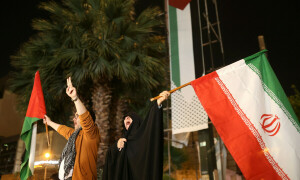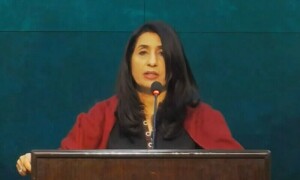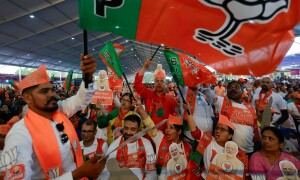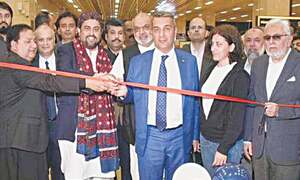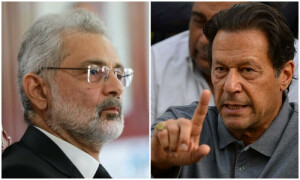FIVE years since field work was initiated in February 2016, the struggle continues to make operational only the Green Line of the Karachi BRT project (now called the Trans Karachi Breeze project). This continuing delay and rising concerns regarding the quality of work should not come as a surprise. The Karachi BRT project is a classic case study of how not to implement a primary urban mobility project and stands as a sad testament to the causal factors behind the city’s long-standing failure to implement a viable public transit system.
Since the mid-1970s, planners and policymakers have considered various public mass transit options, ranging from LRT to BRT, and the revival of the Karachi Circular Railway. Till the initiation of the Karachi BRT project, no plan transited to work on the ground. However, what is actually happening raises more fears and apprehensions rather than giving confidence to the public that Karachi’s mobility challenges will be effectively addressed and resolved.
Some months ago, Bloomberg, a US-based news agency, quoted from a study defining the public transport system in Karachi as the worst in the world. A recently conducted Diagnostic Report by the World Bank indicated that the public transport constituting only five per cent of the vehicle load carries 42pc of the travelling public with 45 passengers competing for a single bus seat in Karachi. This while 1,000 new vehicles are added to the streets every day. So why the fear that the Karachi BRT will not overcome these challenges to make Karachi a public transit-friendly city?
The project got off to a faulty start with planning not sourced from a centralised authority, with the result that the proposed ‘lines’ have been addressed mostly in isolation. A centralised authority, now mandated to own and manage the project Trans Karachi Breeze has only just started to come out of its long hibernation. As such, an overarching vision that could have enabled synergised pathways for smooth planning and implementation has never existed. The authority earlier tasked with organising matters, the Sindh Mass Transit Authority, from the very beginning struggled to articulate a well-calibrated vision, while city agencies like the KMC sat on the sidelines, rendering critical institutional interfaces more dysfunctional.
The Karachi BRT project got off to a faulty start with planning not sourced from a centralised authority.
Lack of viable vertical and horizontal synergies created legal and institutional imbalances that have seeped into the project’s DNA. The Green Line is funded by the federal government while its feeder, the Orange Line, is being funded by the Sindh government. The Red Line is being funded by the Asian Development Bank, while the Yellow Line’s funding is being negotiated with the World Bank. As funding sources are a mix of local and foreign, technical design and related social and environmental safeguards do not find compatibility. The Green Line is considered a ‘first-generation’ design, as also the Orange Line, while the Red Line complies with ‘third-generation’ design requirements of the BRT. The Green Line is silent on matters like inter-modality while the Red Line offers feeder transport options such as bike-sharing. So citizens of the same city, depending on their route preferences will be availing differing levels of services. Are those using the Green and Orange Lines ‘lesser’ citizens of the state?
Globally, urban design is now promoting the greater spread of Non-Motorised Transport — walking and bicycling. The Karachi BRT provided an opportunity to leverage NMT as ‘inter-modality’ modes linking with the BRT primary modality mode, particularly as most of the primary routes of the Karachi BRT, are not providing viable ‘access’. Other than in the Red Line, this consideration is missing, which could discourage use. Then mobility projects are not just about getting people from point A to B. They have a larger urban livability improvement and sustainability agenda where they trigger improved environment, economic prosperity and more inclusive cities — these can be seen wherever improved access leads to, for example, the revival of decaying public spaces. Here another opportunity is lost as the Karachi BRT has not been coupled with the Transit Oriented Development (TOD) planning.
Wherever such projects have been successful, a critical element has been strong behaviour change strategy embedded in the overall planning process. Not so here. How will people be incentivised to change travel modes? No thought has been given to this important consideration. In fact, this shortcoming is further compounded by counterproductive government policies and practices. Car financing and auto loans have surged in recent years, primarily to facilitate the Uber/Careem mobility models while imports of cheap motorbikes are at an all-time high. So while a public transit project is being rolled out, citizens are getting easy access to personalised mobility modes.
Despite existing project imbalances, there is still time to rationalise inconsistencies, and limit the damage done. The governance architecture needs the fine-tuning of existing policy instruments, administrative mechanisms and the creation of interfaces with city-level agencies. This can happen if emphasis is placed on promoting NMT where agencies such as the KMC develop and implement frameworks like an urban street design manual for the city in collaboration with professional bodies. Shortcomings including the lack of inter-modality options, particularly for the Green and Orange Lines, can be addressed by connecting primary mobility modes with ‘feeder’ options.
For Karachi BRT to have a wider ‘urban livability’ footprint, all BRT lines should have TOD plans in place so that improved access leads to rejuvenating decaying public spaces, reviving historical districts, the creation of pedestrian districts in busy commercial areas and facilitating greater employment opportunities. There needs to be an enabling space for transitioning from automobile usage to public transit and that can only happen if the authorities in charge reach out to the ultimate users and discourage policies that are hampering a smooth transition.
However, all this requires strong political will and a broader shared vision that can guide these mobility interventions towards the goal of achieving sustainable urban mobility.
The writer is an urban planner and CEO, Urban Collaborative.
Published in Dawn, February 19th, 2021


























